Aer Flight Pack 3 Review
The Aer Flight Pack 3 offers versatile carry and lots of storage for your gear while cruising at 35,000 feet, making it a great companion for a wide range of trips.
Our Verdict
Save time. Get access to brief summaries of our reviews so you can browse and make decisions more efficiently.
Pros
- Has an abundance of built-in organization
- All three carry options are comfortable
- Shoulder strap stow pocket is sleek
Cons
- Sternum strap can be finicky
- Internal organization is slightly overkill, though versatile
- Reduced handle padding for briefcase carry
Technical Details
-
Capacity
20l
-
Weight (lb)
3.4 lb (1.5 kg)
-
Dimensions
18 in x 12 in x 5.5 in (45.7 x 30.5 x 14 cm)
-
Notable Materials
CORDURA® Ballistic Nylon, YKK Zippers, Duraflex Hardware, Aluminum, X-Pac, CORDURA® Nylon
-
Laptop Compartment Size
16"
-
Warranty Information
Full Review
Get up to 10% off Aer • Join Pack Hacker Pro
The third installment of Aer’s Flight Pack brings a few new features to the table, but for the most part, keeps most of the staples of previous generations. It comes in at 20 liters, a liter larger than the second iteration, and 3.6 liters less than the first. We can’t help but wonder whether the increase in size and addition of new features are enough to warrant upgrading from the second generation to the third, or if the changes are more for looks than functionality.
We plan to get our hands pretty dirty with this one, so buckle up, and let’s get started.
Materials & Aesthetic
Starting things off with the materials, we see something familiar from the get-go. The pack material is 1680D Cordura Ballistic Nylon, which is par for the course for Aer. It’s now bluesign approved, too, which means that it’s sustainably sourced.
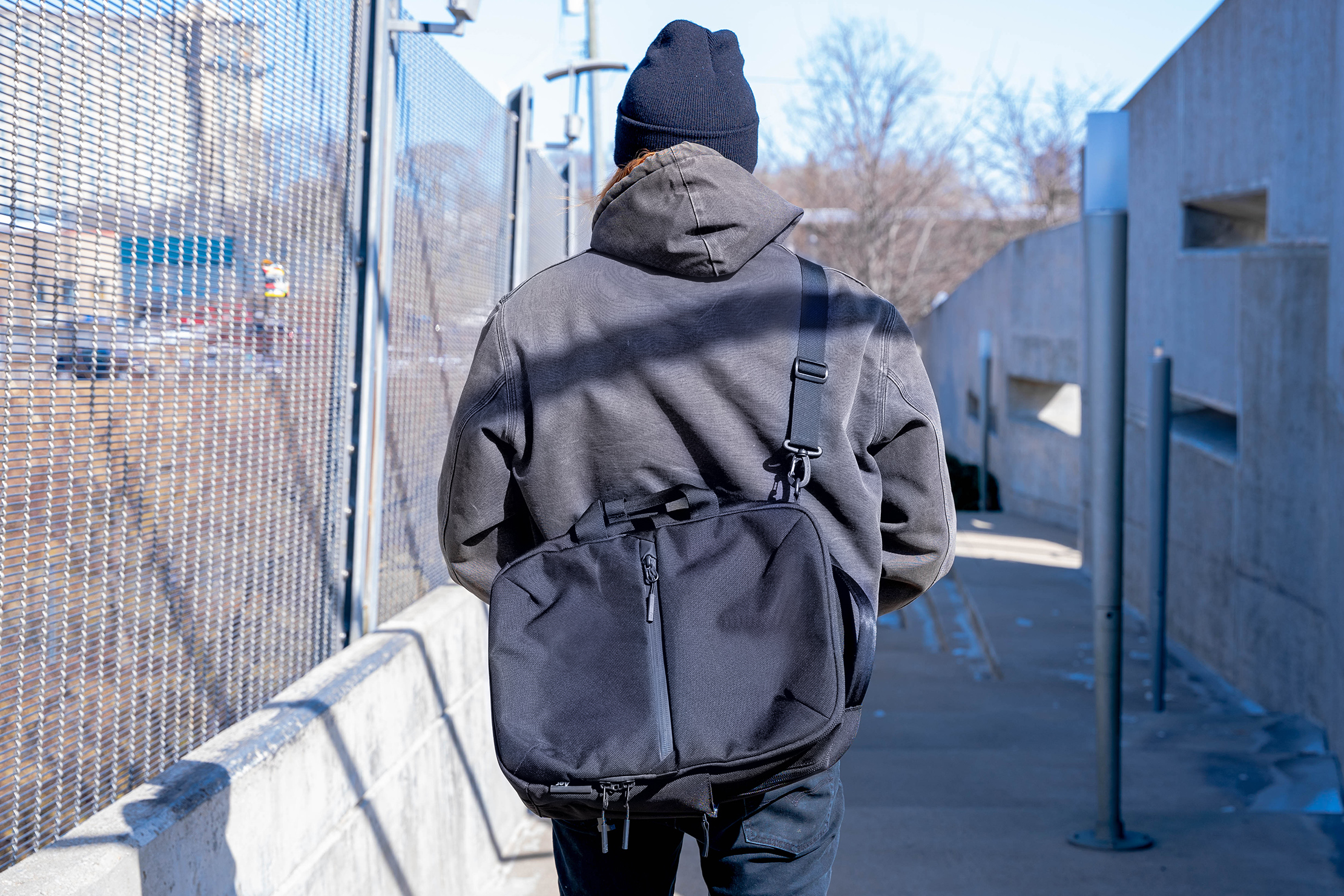
The material is easy to clean with just a wet rag if and when it picks up dirt and dust, which is fairly visible on the black colorway. The corners and crevices of the pack are a little harder to get clean, but a bit of scrubbing or using a brush from the sink does the job pretty well.
The material holds up well when faced with moisture considering it doesn’t have a DWR coating. The material is thick enough that it’s difficult for water to penetrate it, and it held up in 30 minutes of consistent rain snow, and sleet.
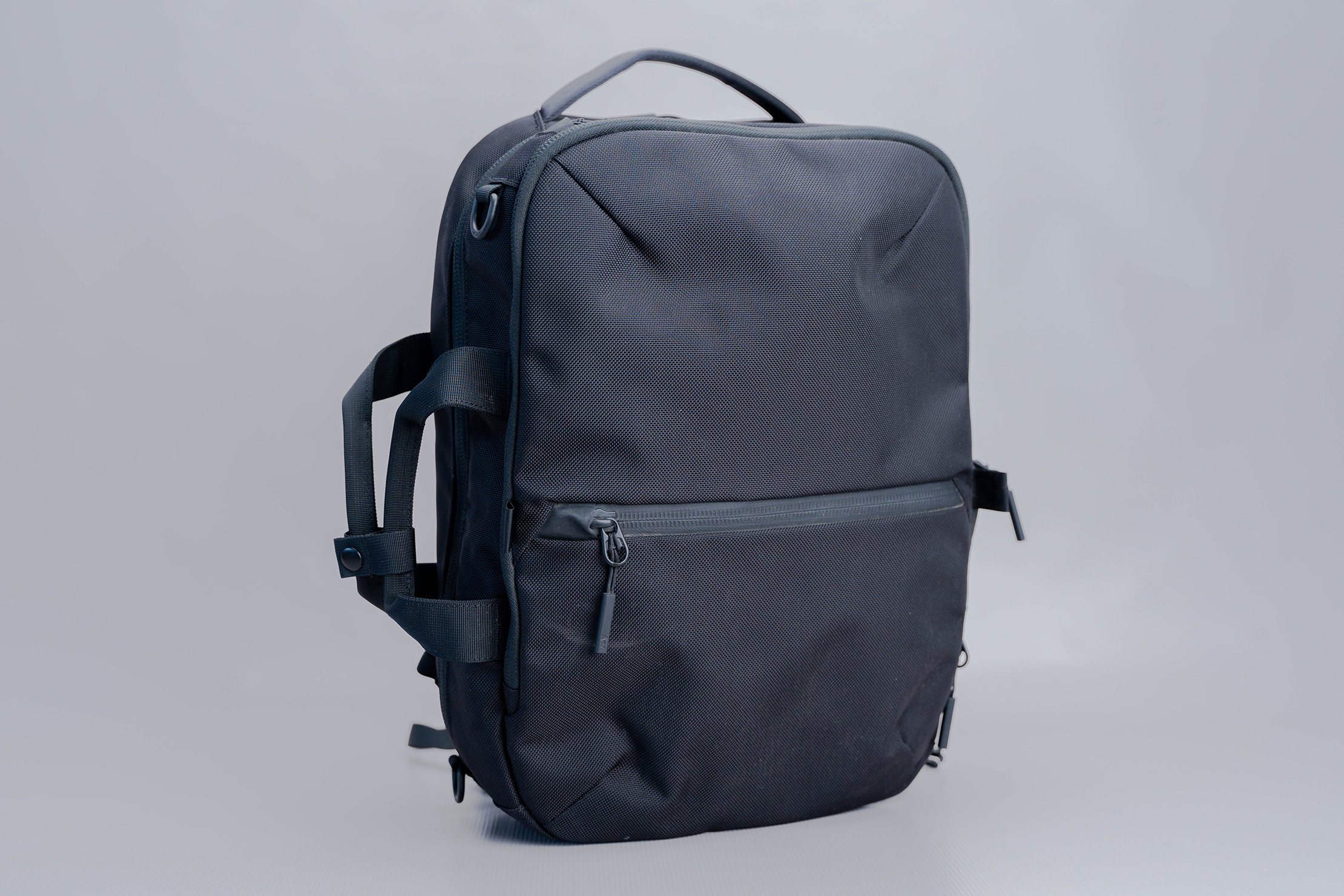
We have the Black Cordura colorway on hand, but there are Heathered Gray 700D Cordura and Black X-Pac options, too. The Black is sleek and minimalistic while the Gray is a little less industrial-looking. The X-Pac has a neat diamond pattern throughout the fabric and an orange interior compared to the gray interior of the model we have on hand.
There are YKK zippers throughout the bag, all of which perform well. The front pocket is Aer’s signature #10 AquaGuard zip, and there are loops on either side of the zip to assist in opening. When we mentioned dirt getting stuck in nooks and crannies earlier, this was one of the worst culprits.

The main compartment and accessory pocket zippers are standard #10 models, which open smoothly and are lockable. You need to purchase an additional lock, but the addition is nice for added security. At the end of the day, it’s more of a deterrent than a guarantee, as all zippers will come apart if enough force is applied, but it will slow strangers down if they try to get into your pack.
The water bottle pocket is a YKK #5 and has a Hypalon zipper pull, which can get slippery in wet conditions. The top pocket and interior accessory pocket are both YKK #5 self-locking zippers. There’s not much worse than a zipper that slowly opens in transit, and the self-locking technology in these zips is extremely sturdy.

The front pocket, main compartment, and accessory pocket zipper pulls are a paracord-like material and end with a larger piece of hard cylindrical plastic. The plastic is slippery when wet, but it’s easy enough to grab onto where the paracord feeds into the plastic when the weather takes a turn. The self-locking zippers have a standard YKK hard plastic pull, which is easy enough to use and hides nicely when not in use.
The buckles to disconnect the shoulder straps are Duraflex Stealth models, which are small but very capable—they’re also a change from the clips on the Flight Pack 2. Sometimes you just want something simple and easy, and these buckles have that in their DNA—they just work.
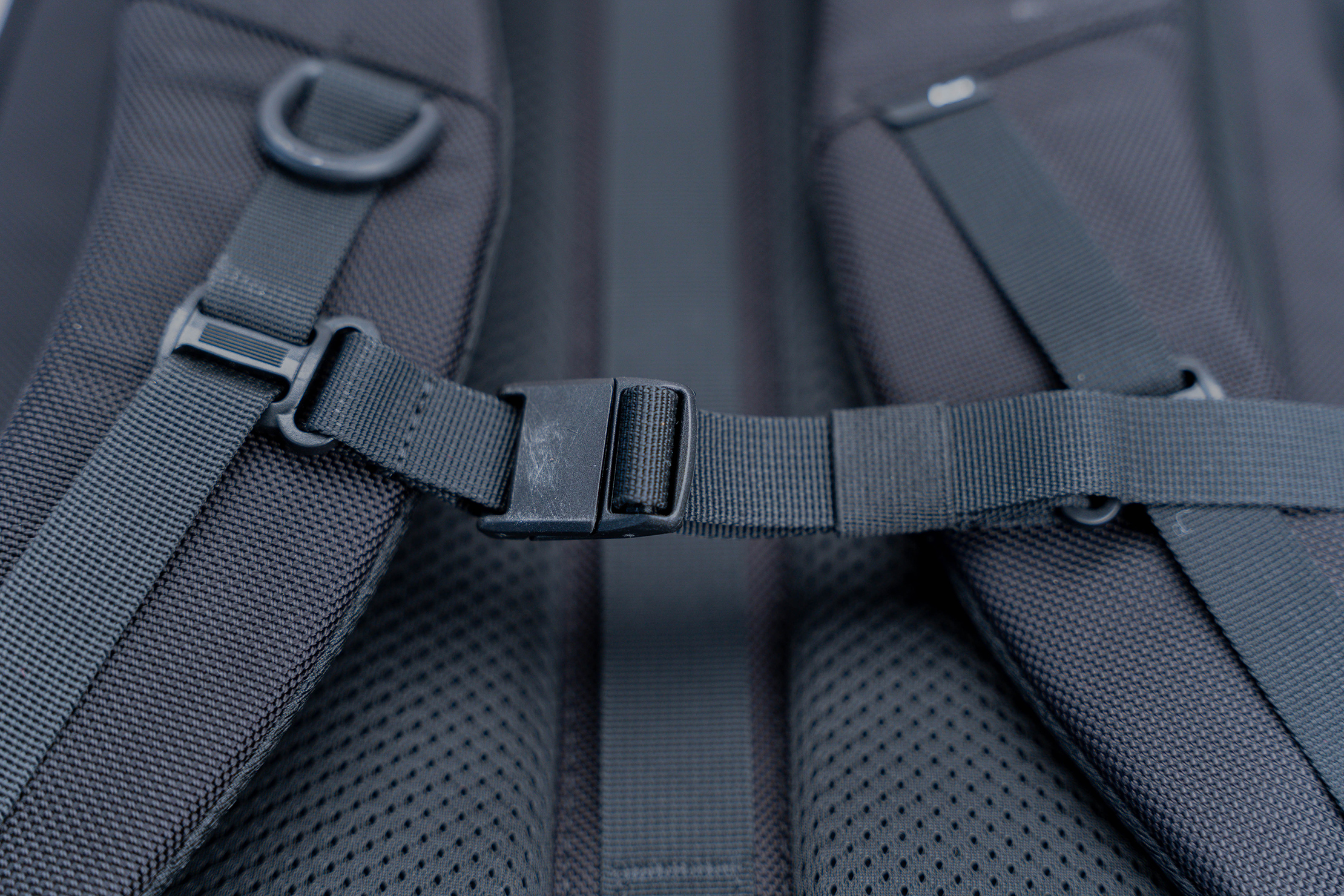
The sternum strap uses a hard plastic magnetic clasp, which we had a little trouble with. It’s pretty tiny, and we found that we often had to use two hands to clasp and unclasp it. We only got half of the clip on multiple times and didn’t realize it, only for it to come open a few moments later. Once you have it clasped correctly, it works fine, but it is a little challenging to get used to.
External Components
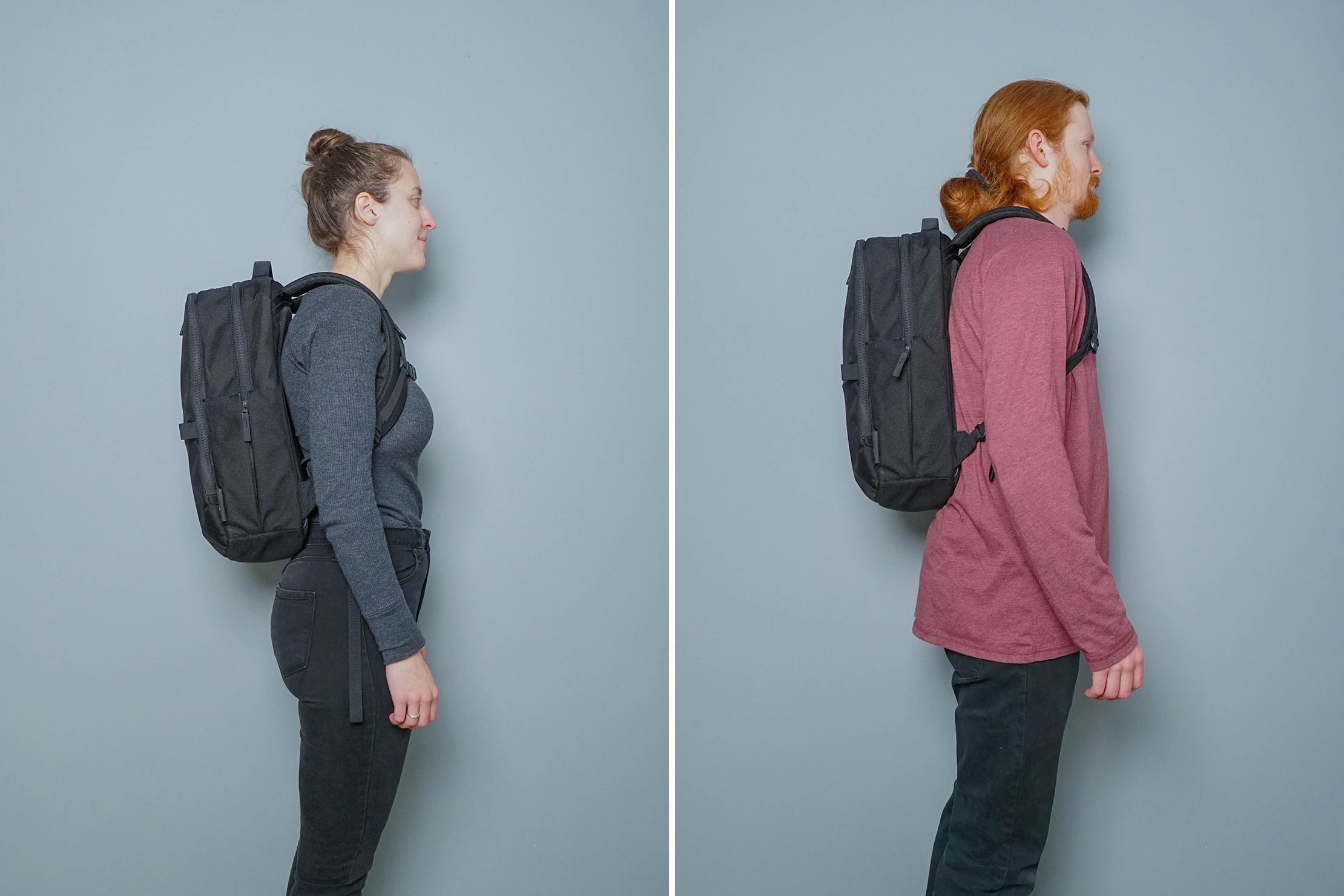
The shoulder straps on the Flight Pack 3 have ample padding and aren’t too wide. They also have aeration, which keeps things dry in hot weather. They’re shaped like an elongated S, which conforms to your body as it works its way from your shoulders downward. They aren’t terribly rigid, so they can be manipulated to suit different body types. The right shoulder strap has a D-ring on it, which is a good place to hang a pouch like the Yakoda Supply Utility Pouch, or a flashlight like the NITECORE TINI 2.
The straps stash away behind the back panel, which is a great way to enhance the other carrying options we’ll cover shortly. The Flight Pack 2 has a zipper at the top of the back panel to zip the straps away, and this time the system is more like a liner pocket that doesn’t fasten at the top.
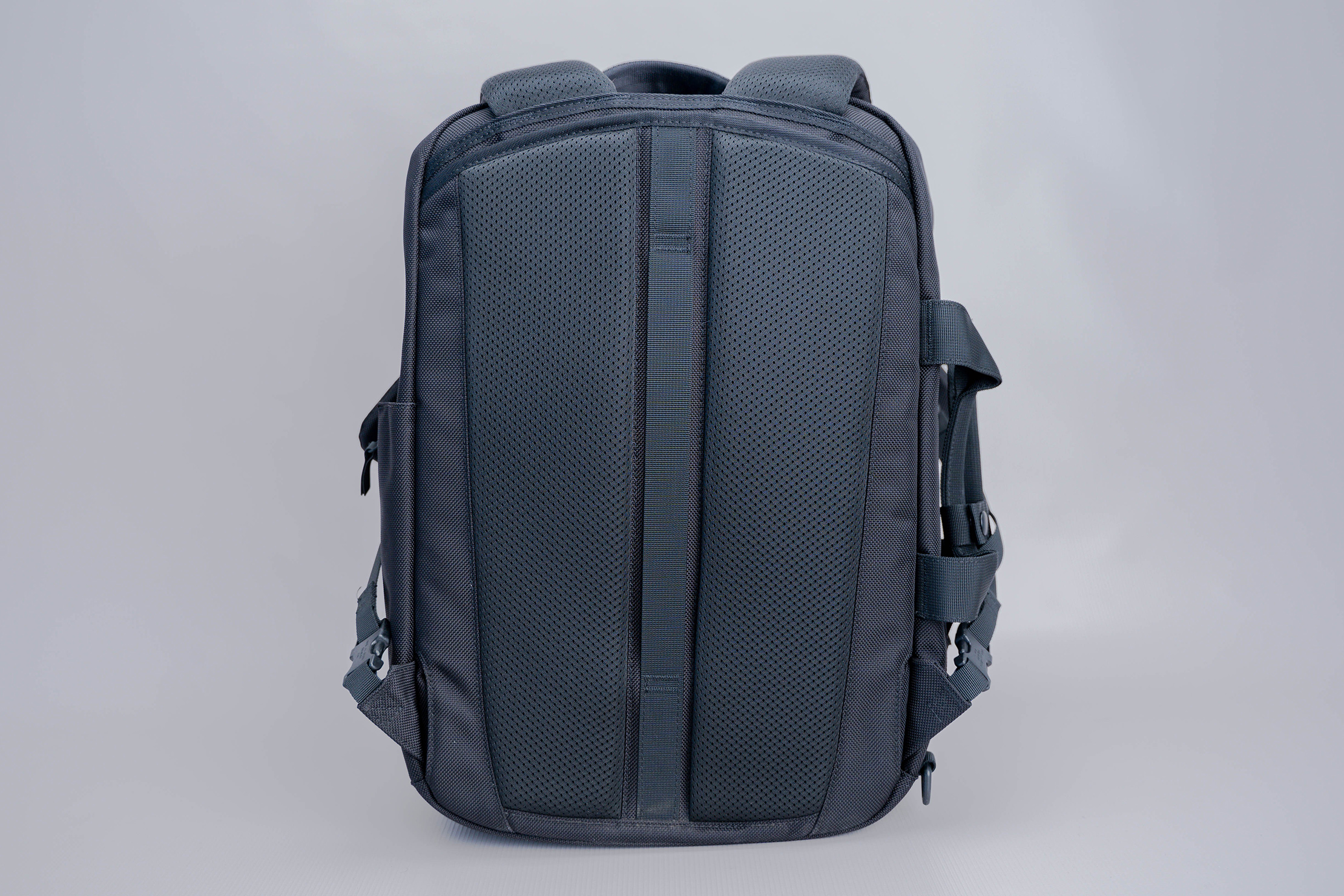
When they’re stowed away, the pocket stays flush and looks nice. The zipper on the 2 looks nice when zipped, but a little odd when using in backpack mode since the top zipper stays open.
The back panel has a lot of padding and similar aeration to what we find on the shoulder straps. We’ve found that the airflow helps when the weather gets a little warmer, which is a big plus.
The back panel is broken up into two parts, and the luggage pass-through divides the two. It’s a small nylon strap, but it feels durable and secure. The back panel sides are raised, so the luggage pass-through doesn’t get in the way when it isn’t in use, and the padding ensures that the pack doesn’t wobble around too much once you’ve secured it to your luggage.
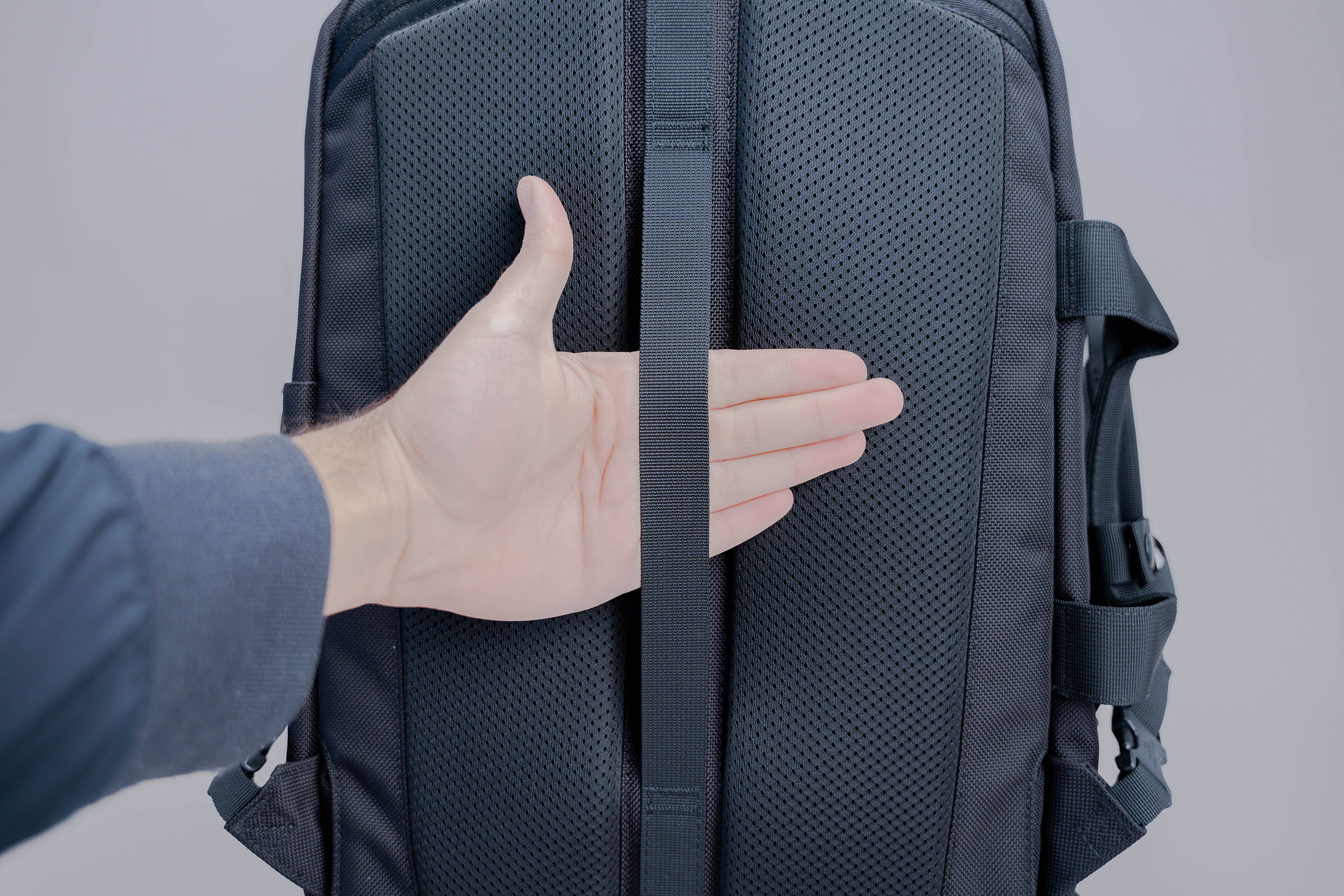
The sternum strap is removable and attaches to a rail, so you can make detailed adjustments to ensure it’s in the perfect position for you. Once you’ve picked a position, it stays put and won’t move up or down unless you put a lot of force on the strap.
The shoulder straps and sternum strap both have elastic strap keepers to maintain any extra adjustment material. Although the elastic is very tight, you can fit a ton of strap in there, which is great for those with smaller body types or who like to keep their bag tight on their back.
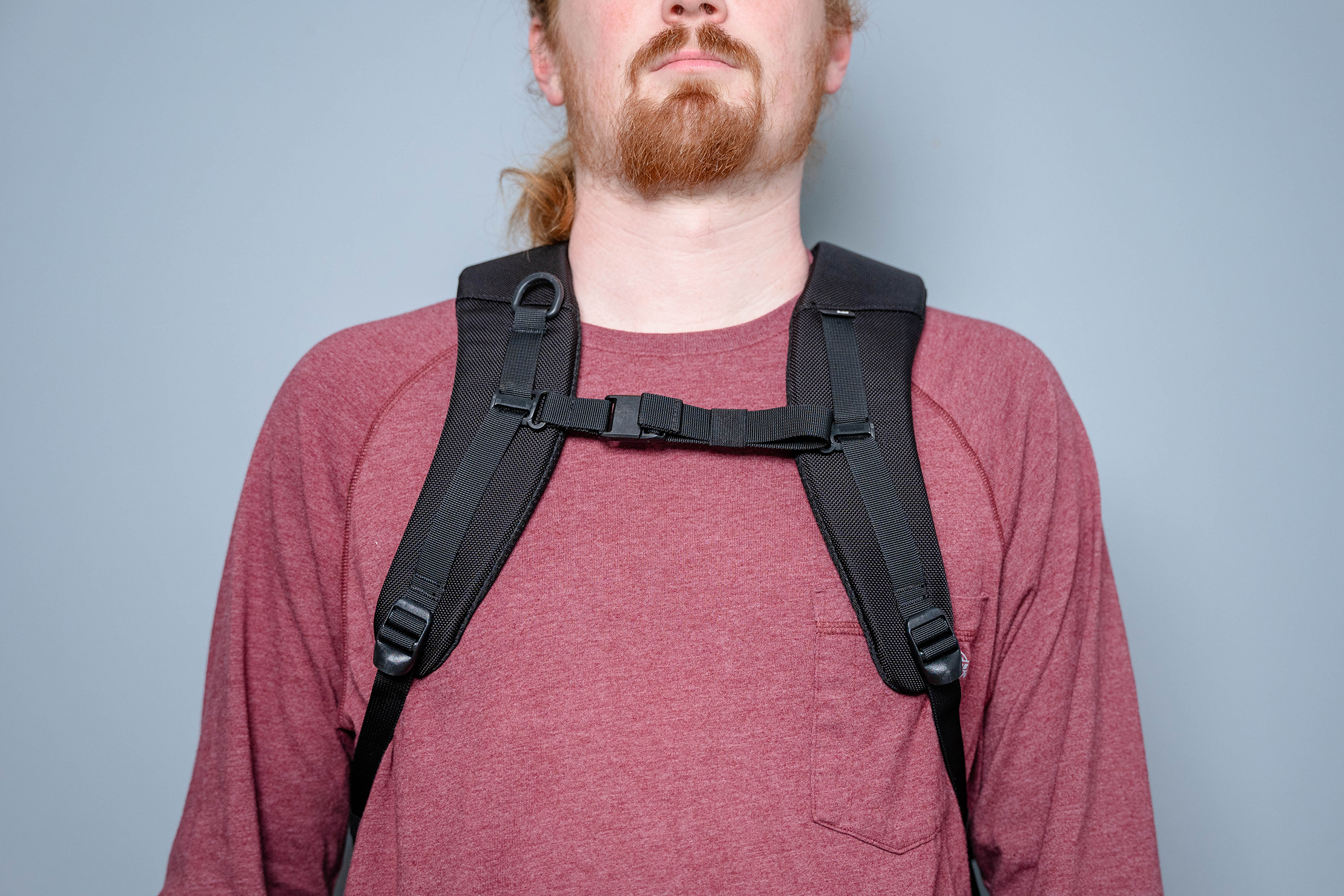
The water bottle pocket is integrated nicely, similar to the Flight Pack 2. Though they appear to be the same size, the Flight Pack 3 is better at fitting larger bottles like a 32 oz Nalgene. This is an excellent upgrade for those who like to stay hydrated, and we’re happy to see the small adjustment. This spot also works for a BlueTooth speaker like the JBL CLIP 4 for those who can’t go without music.
Coming in at 20 liters, you can fit a ton of gear into the Flight Pack 3. However, with a ton of gear comes a lot of weight, and even with the comfortable shoulder straps, you may want to switch up how you’re carrying the pack. On the opposite side of the water bottle pocket are two handles that make the transition from backpack to briefcase smooth.
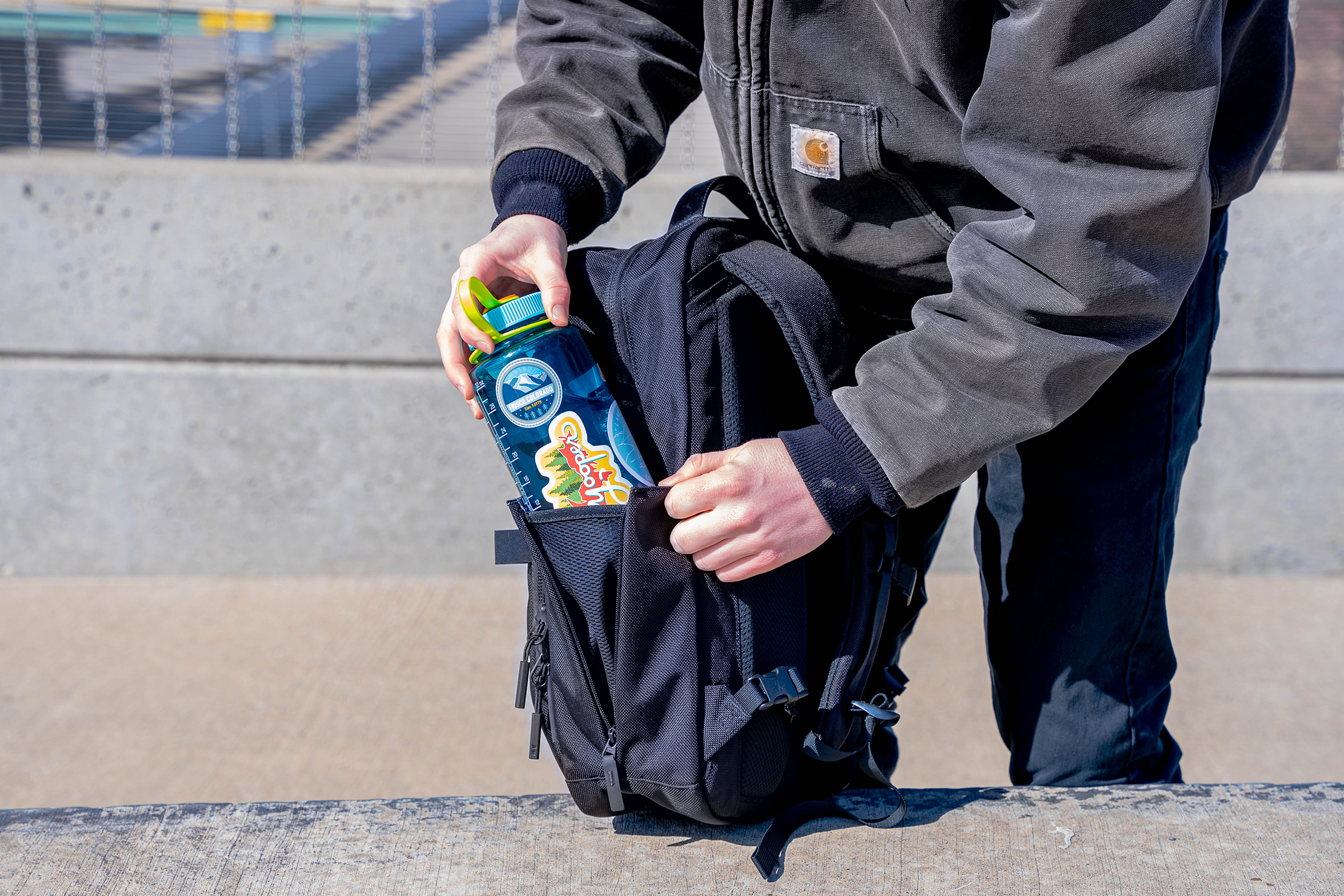
There are two handles, one on each side of the zipper. A small piece of nylon with a button on it keeps the two handles together, which is comfortable enough. You can push the piece to the side and hold the two handles, which is even more comfortable. After about 10 minutes, it starts to get uncomfortable. This is great for heading through the airport security line if you choose to use the Flight Pack as your carry-on, as it’s quick to go onto the belt and quick to grab it off again. It also works well for public transportation when you can’t keep the pack on your back.
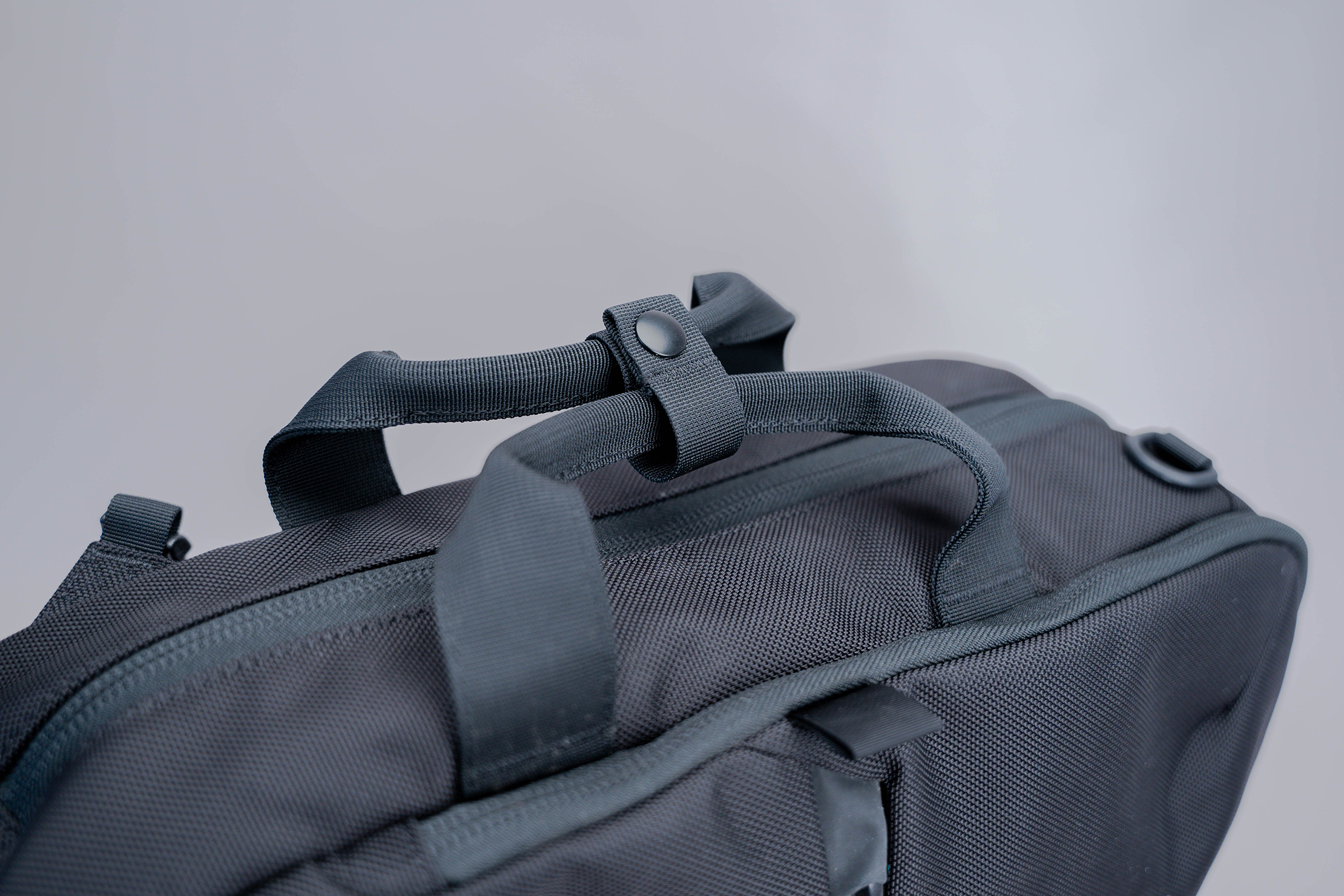
The Flight Pack 2 has a larger piece of material to hold the two handles together, which adds a bit of comfort during longer jaunts with the pack in briefcase mode. However, while this is a bit nicer on your hand, it blocks the zipper track. You can unclasp the button and take apart the handles to get to the zipper, but you don’t want to do that every time. With the Flight Pack 3, there isn’t as much material to get in the way, so you can easily access the zipper without removing it. That said, you do lose a bit of the comfort.
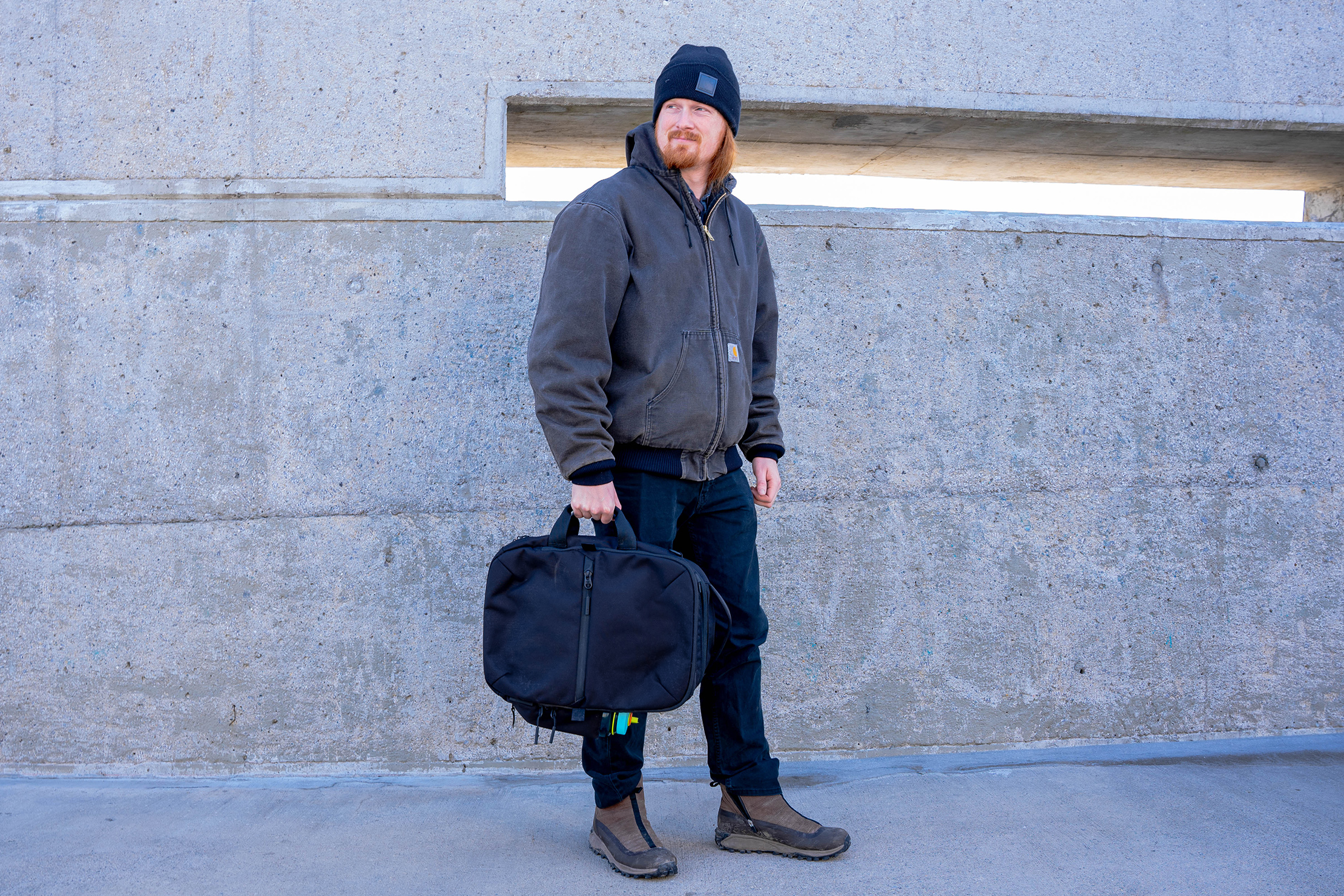
If you want to open the pack all the way, you’ll need to undo the button and separate the handles. However, for grabbing something quickly while carrying it in briefcase mode or while using it as a backpack, you can get away without undoing it. We think this is an excellent change, as it increases the pack’s functionality without taking away a lot of comfort.
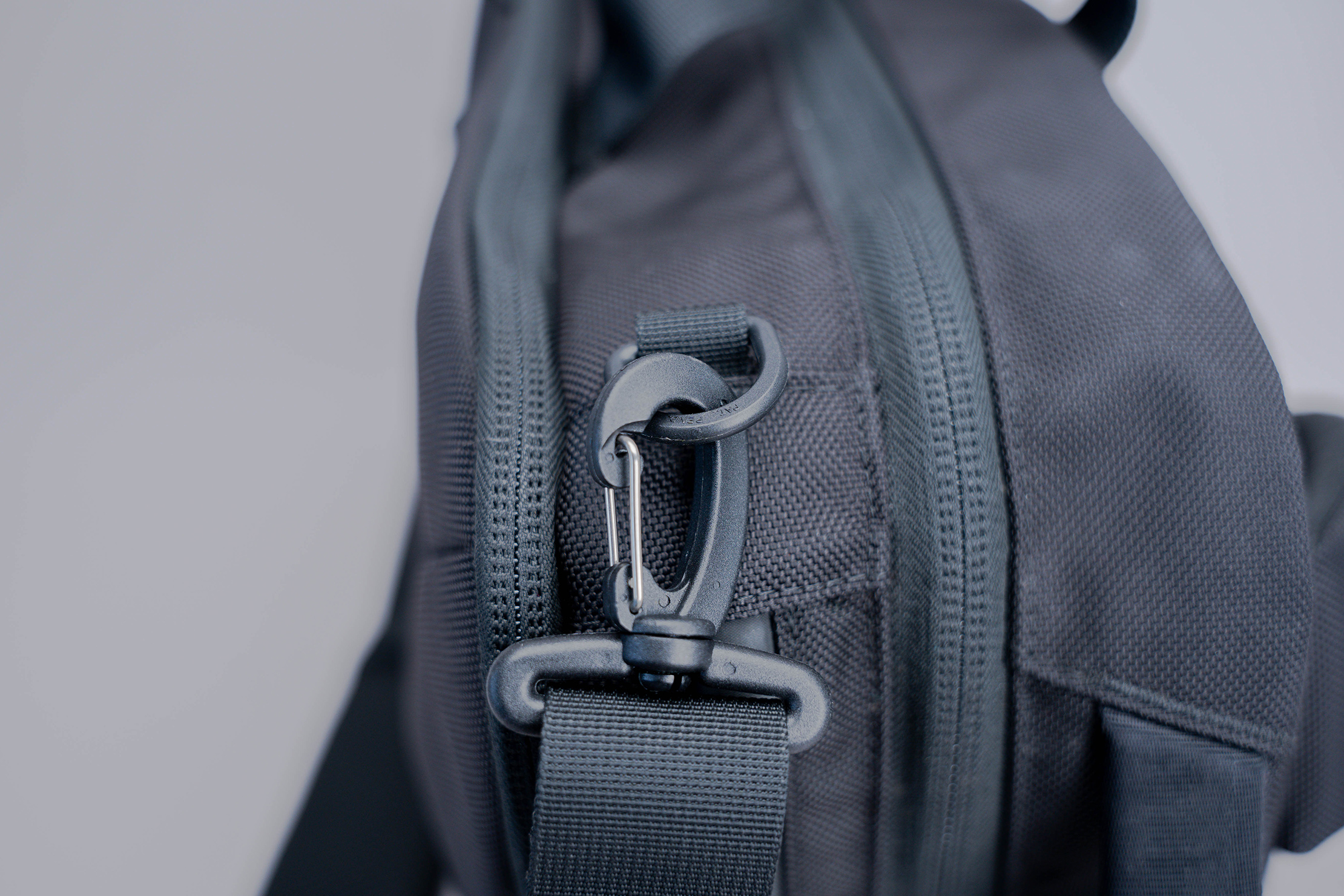
On each side of the handles are rugged plastic D-rings. This is where you can attach the included shoulder strap to go into messenger carry mode. If you don’t like the included strap, you could use any strap that you wish so long as it fits on the D-ring. It’s easy to attach and detach from the D-rings, so switching from backpack and briefcase mode to messenger mode is quick.
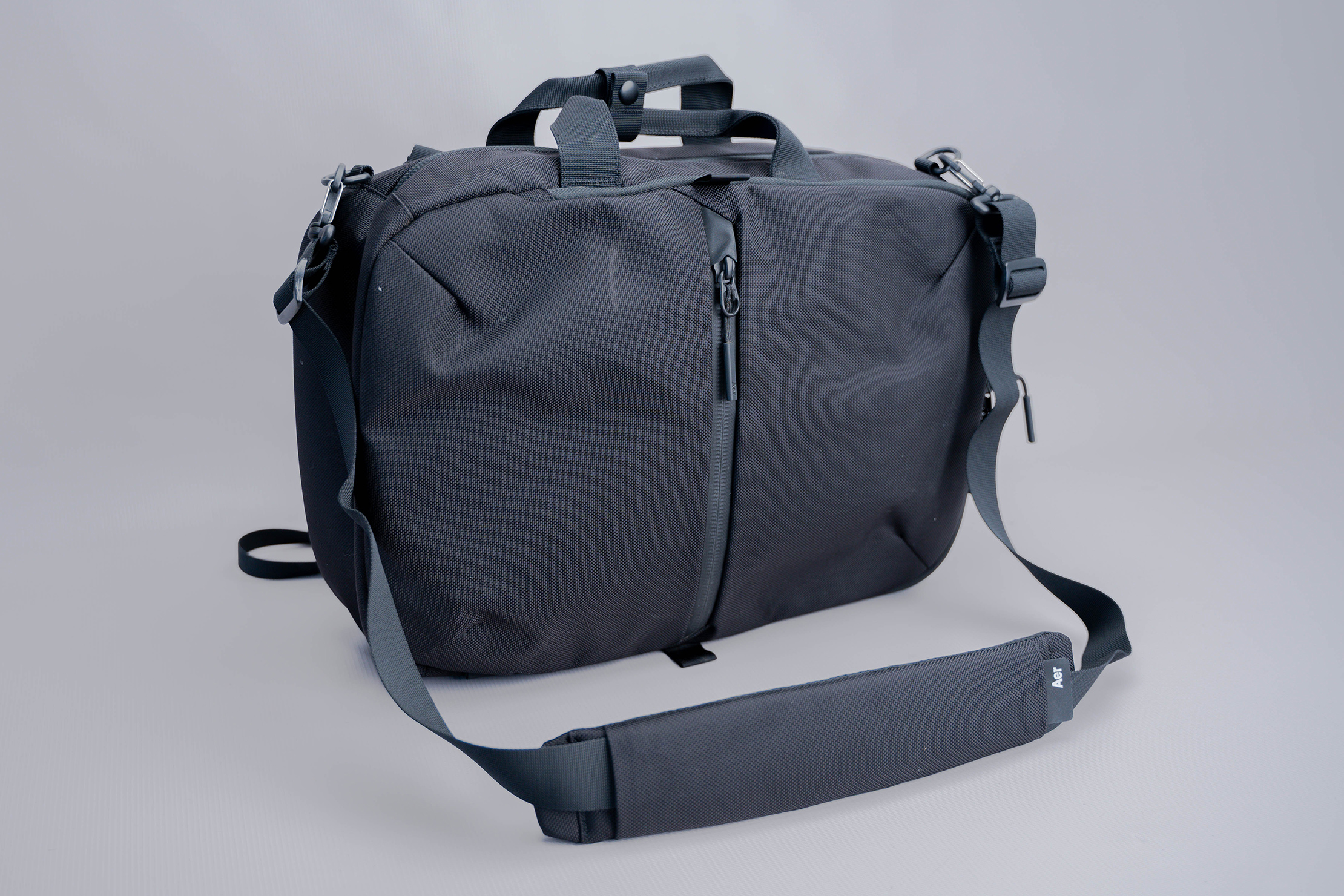
The strap is padded and has the same aeration as the back panel and shoulder straps. It stays surprisingly cool, even when the pack is heavy. The zipper goes all the way to the bottom of the pack on the side where the strap attaches, so you can access things from the side while carrying it.
Inside The Pack
Moving to the pack’s interior, we’ll start with the front slide pocket. This one has the classic Aer YKK #10 Aquaguard zipper, which offers a bit of weather resistance. Flat like books, notebooks, and tablets items do well here, as there isn’t a ton of depth to the pocket. You’ll probably be able to fit more oblong-sized items, but they may be noticeable from the exterior.
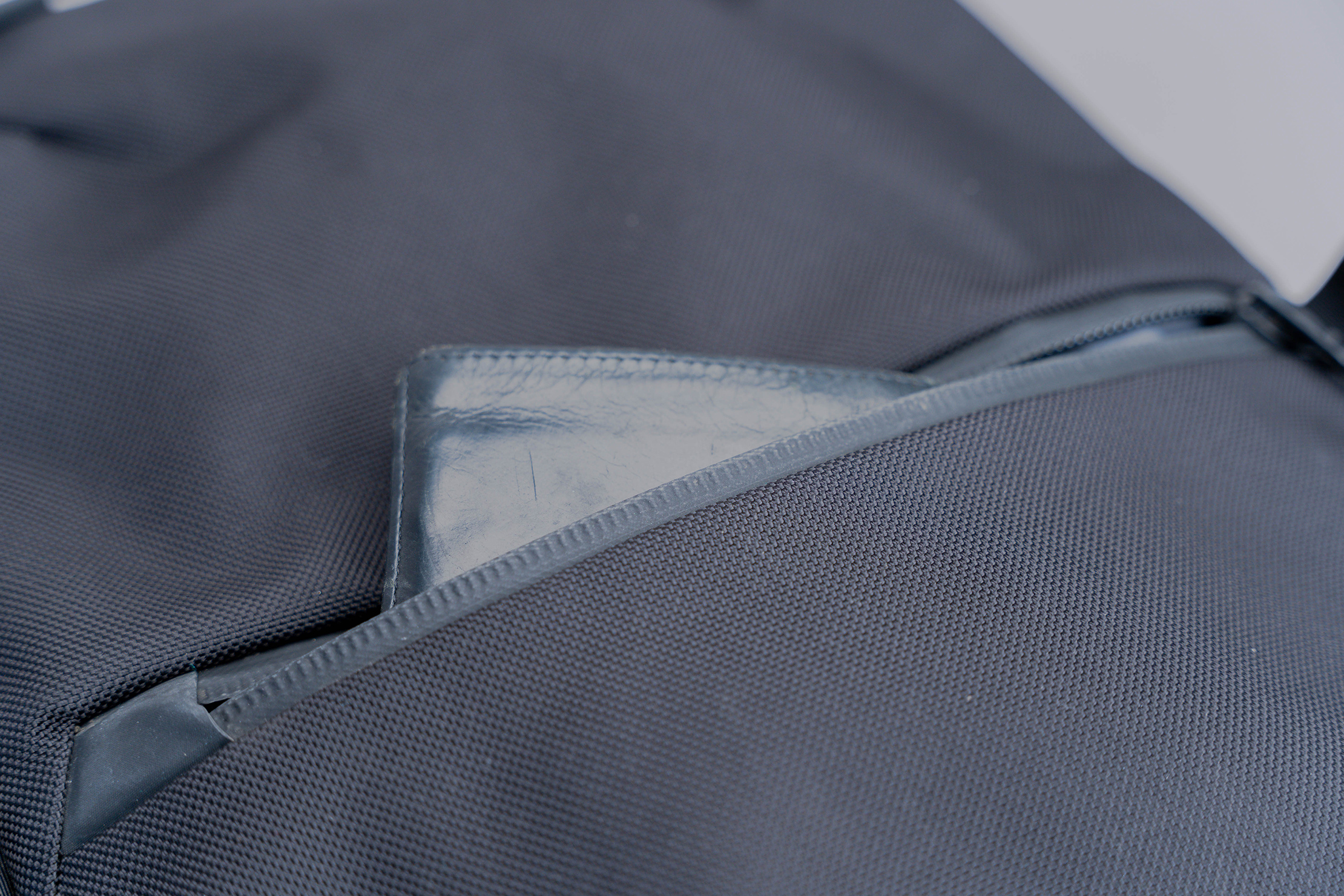
Moving into the accessory pocket—which is the name we’ve given the second largest compartment—we have a zipper that runs about as far south as it’s able to. This makes it so that you can open it extremely wide, which is a perfect way to see all the gear you have stowed inside. The Flight Pack 2 doesn’t have as much access, so we think this is a move in the right direction.
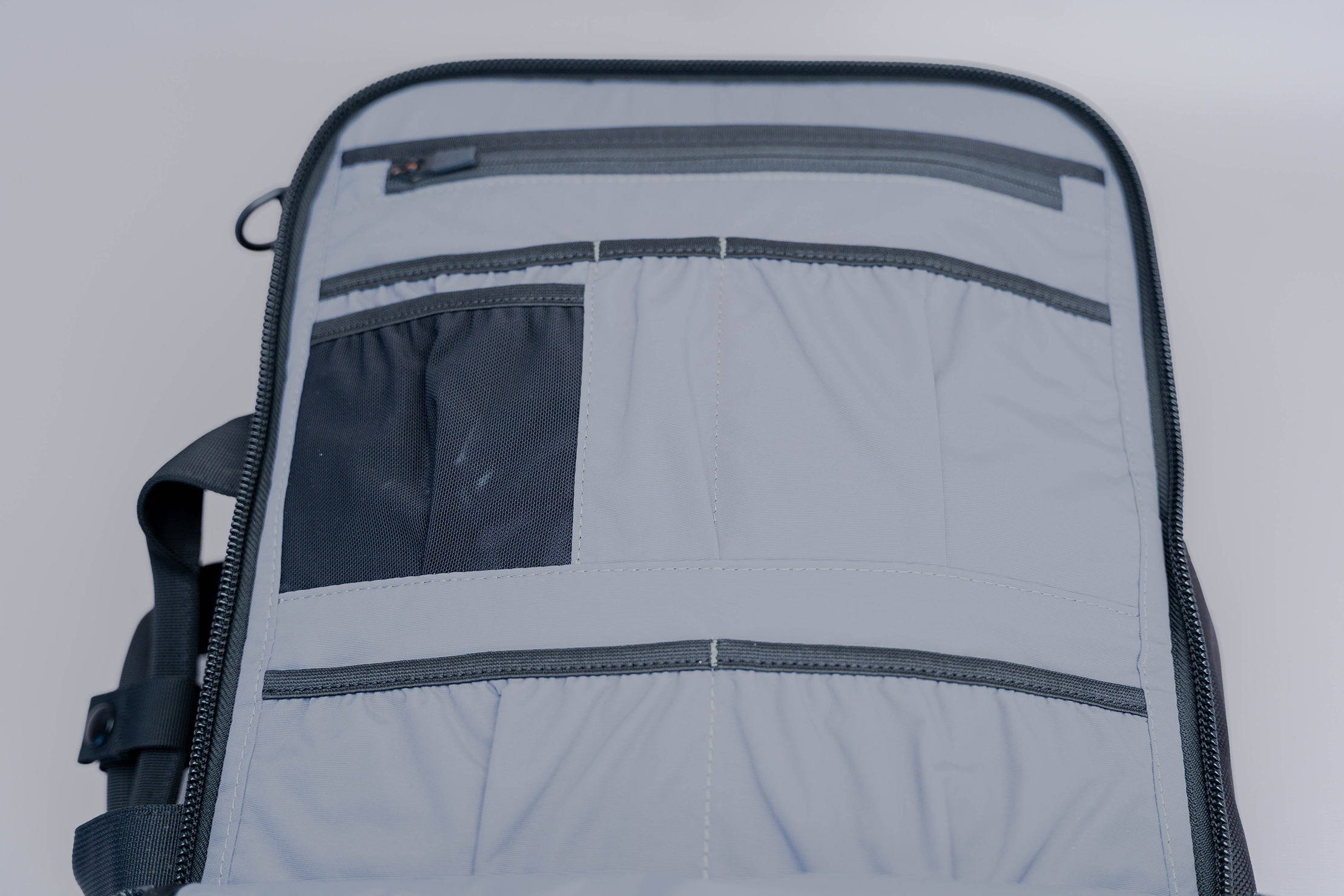
There are two big elastic pockets on the bottom of the organization panel. The elastic on all of the pockets is tight and capable of stowing any item that will fit inside, so long as it isn’t too top-heavy. Above the two elastic pockets we just mentioned is another big elastic pocket, a pen/stylus pocket, and a smaller elastic pocket with an additional elastic pocket on top of it. As you may have noticed, we just said pocket eight times in a row. There are many storage options in this compartment, and we promise to limit our use of the word that starts with a P from here on out.
Above that line of…areas that hold gear…is a small zippered area, which is a great spot for smaller dongles or gear you don’t want to risk falling out. Behind the zippered area is a large liner pocket capable of holding a tablet, notebook, or anything that is about the size of a standard sheet of computer paper.
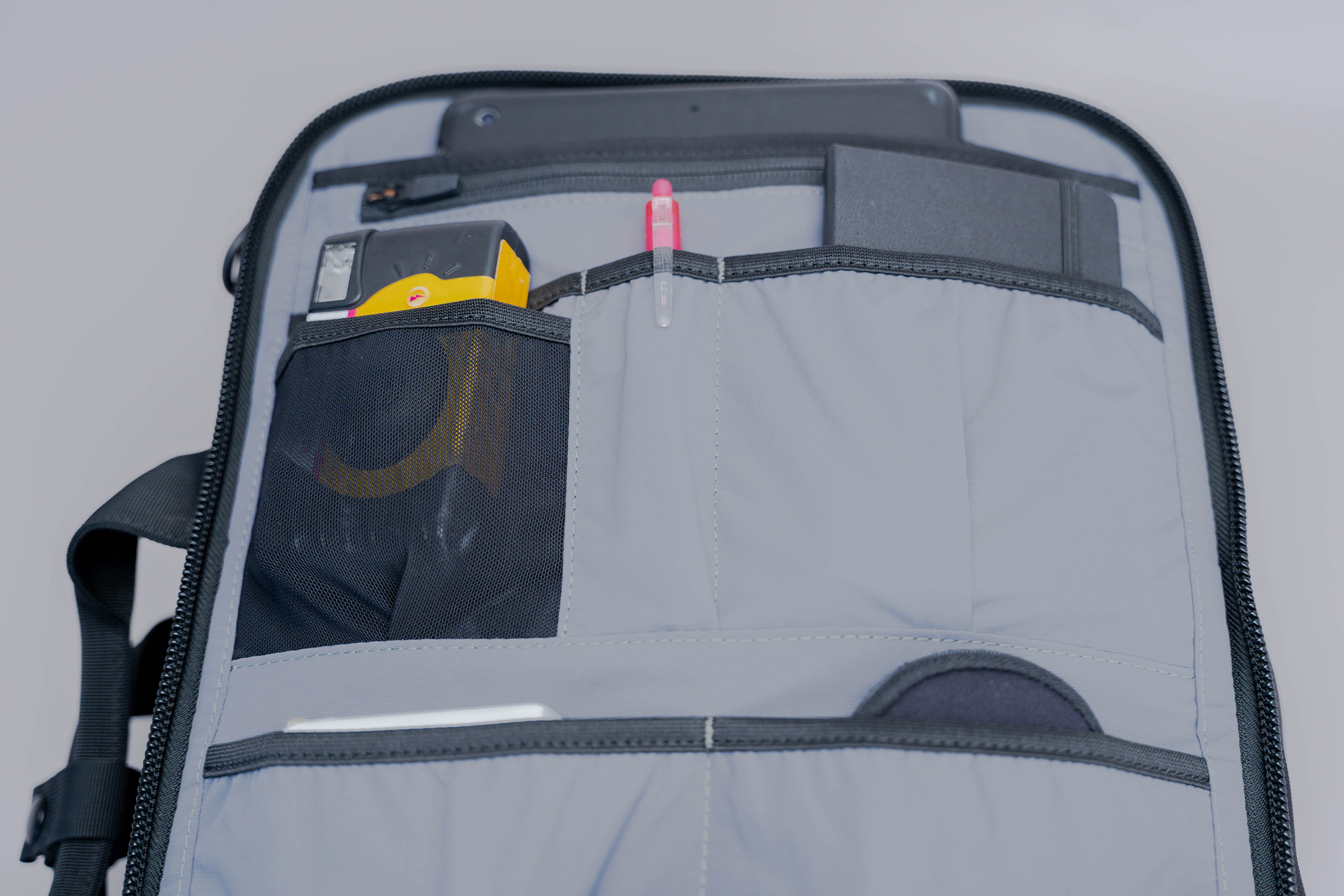
The Aer Flight Pack 2 has similar organization in this compartment, though without a large liner pocket. We like the addition, as there wasn’t a cemented home for notebooks or tablets before its existence.
Moving into the main compartment, the zipper doesn’t open quite as wide as our last stop. The water bottle pocket stops it on one side, but the other goes all the way to the bottom, so it sort of opens at a diagonal angle.
On the flap side of the compartment are two liner pockets with elastic tops. The Flight Pack 2 has the same pockets, but they’re capped by a hook and loop fastener. This change isn’t a huge deal for us, as we can see pros and cons for both. Having a fastener on the top ensures that whatever you stow inside doesn’t come tumbling out in transit. On the other hand, having a hook and loop fastener inside a pack you may stow clothes in is a dangerous game as far as the health of your attire goes.
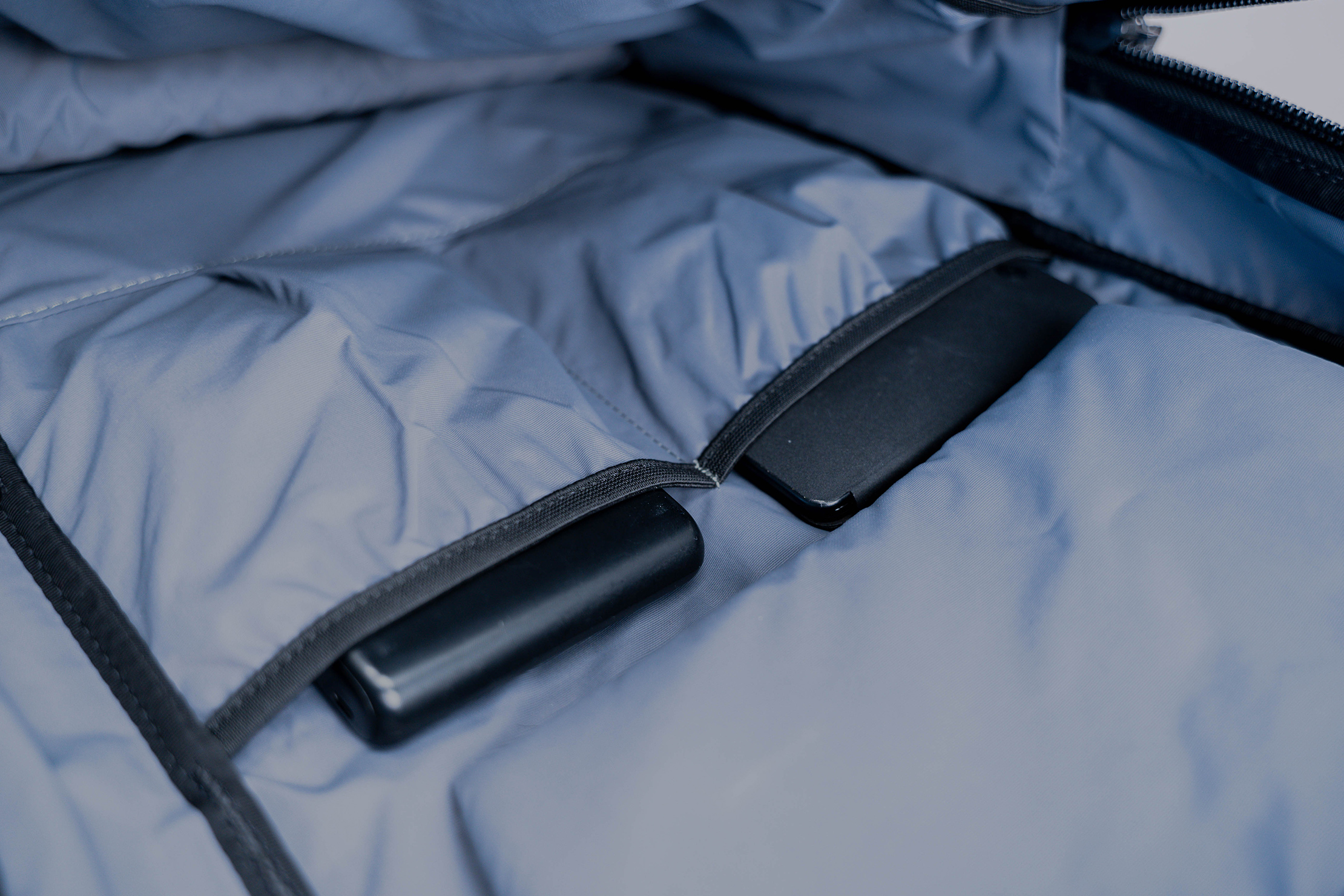
There’s a large liner pocket on the back panel side of the compartment. The elastic isn’t as tight as other places on the pack, likely because of its size. This is a snug spot for a laptop charger or other cords and cables you want to keep segregated from the hubbub of the main compartment.
The laptop sleeve is behind that, which has a comforting black fuzzy material coating and fits up to a 16″ device. There’s plenty of padding as well, which adds peace of mind. The other side of the sleeve has padding too—not as much as the back panel, but enough for our liking. The Flight Pack 2 doesn’t have the fuzzy material, which wasn’t the end of the world, but we do like the inclusion here.
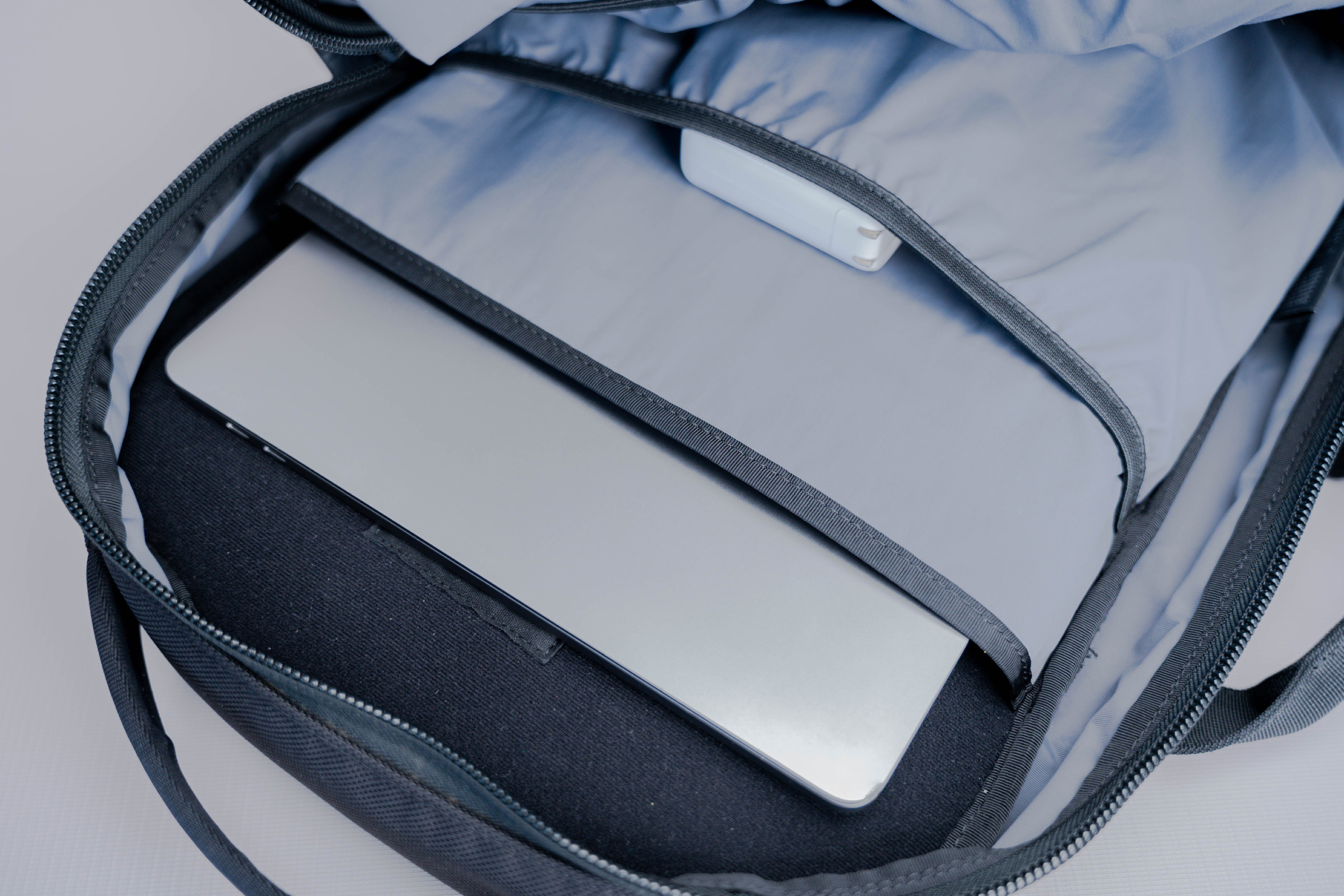
Moving from the largest to the smallest compartment to finish things off, we find ourselves examining the top pocket. This is the perfect spot for quick access items like cell phones, wallets, or hotel keys. We also found ourselves putting a BlueTooth speaker here while it was raining because it offers more protection than the water bottle pocket, and you can still hear the music through the Cordura shell.
The pocket has the same fuzzy material as the laptop sleeve, which is great for stowing your cell phone or sunglasses. The pocket shares space with the main compartment, so when the main compartment is packed and you’re ready to head to the airport, it can be hard to get your quick use items into the top pocket. When your phone is inside, you know it has that little bit of padding to protect it from any rugged gear it may end up sitting next to.
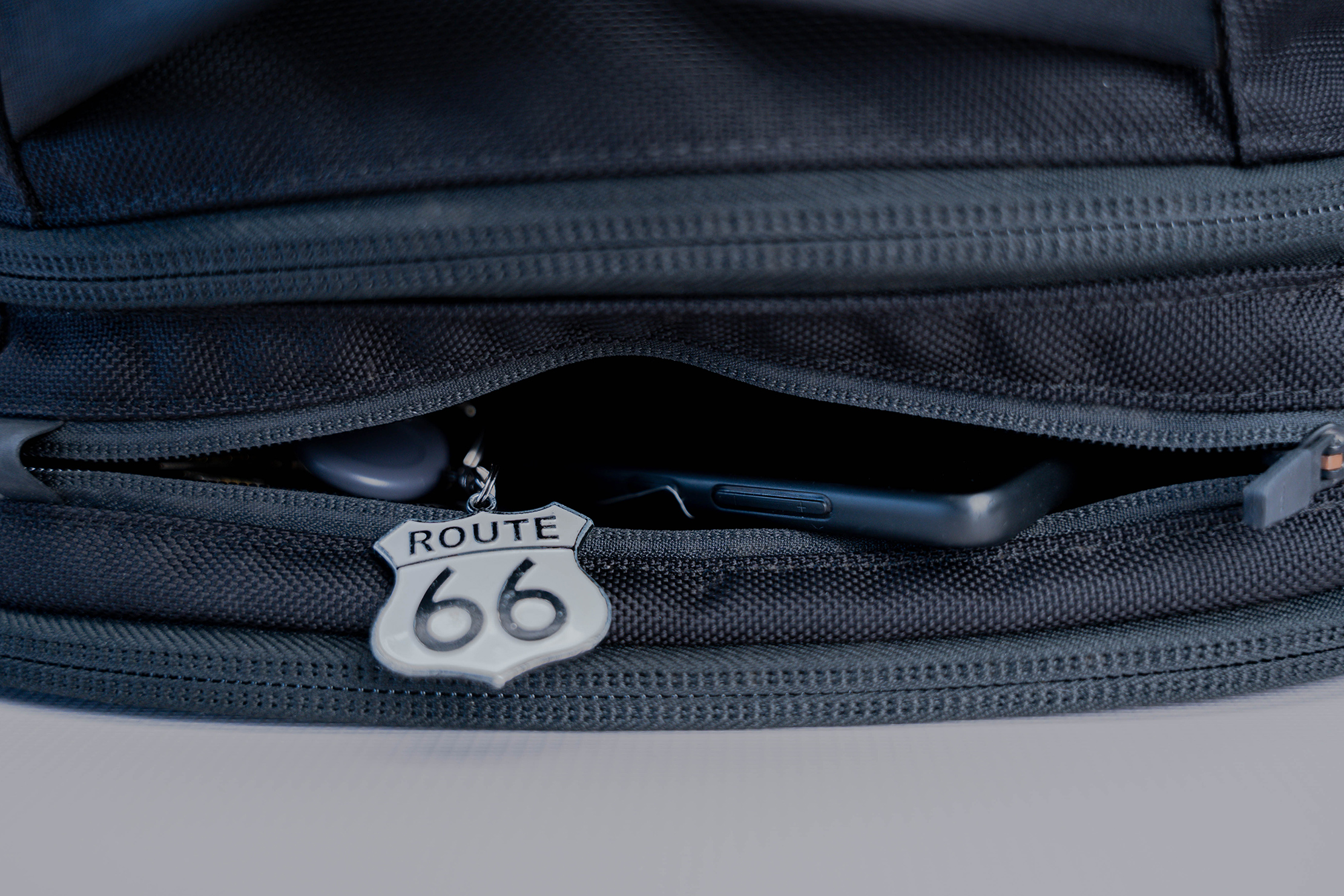
Overall, as you probably remember from the pocket debacle, there’s a ton of places to secure your gear inside the Flight Pack 3. There’s enough organization to sort gear you would typically bring a tech pouch and other organizational devices for. Depending on your usage, this can be a good or a bad thing.
If you like to be able to remove a tech pouch and throw it into a sling for a trip to the coffee shop, you’ll want to pack one regardless. On the other hand, not using a tech pouch does save weight and space, which is great for packing for any trip.
Depending on what kind of packer and traveler you are, you may feel like the internal organization is a godsend, or you may feel like it’s overkill. Either way, the Flight Pack 3 is another great offering from Aer that we are excited to use.
Usage Timeline
Condition: Excellent
- Looks similar to the previous version
- Backpack straps’ storage compartment no longer zippered
- Now has a smart tracker pocket
Condition: Excellent
- Material shows no signs of wear and cleans up well
- Top handle is comfortable to carry
- Sternum strap magnetic fastener is marked up, though it’s just cosmetic
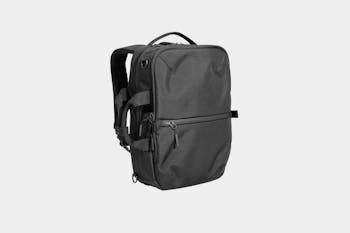
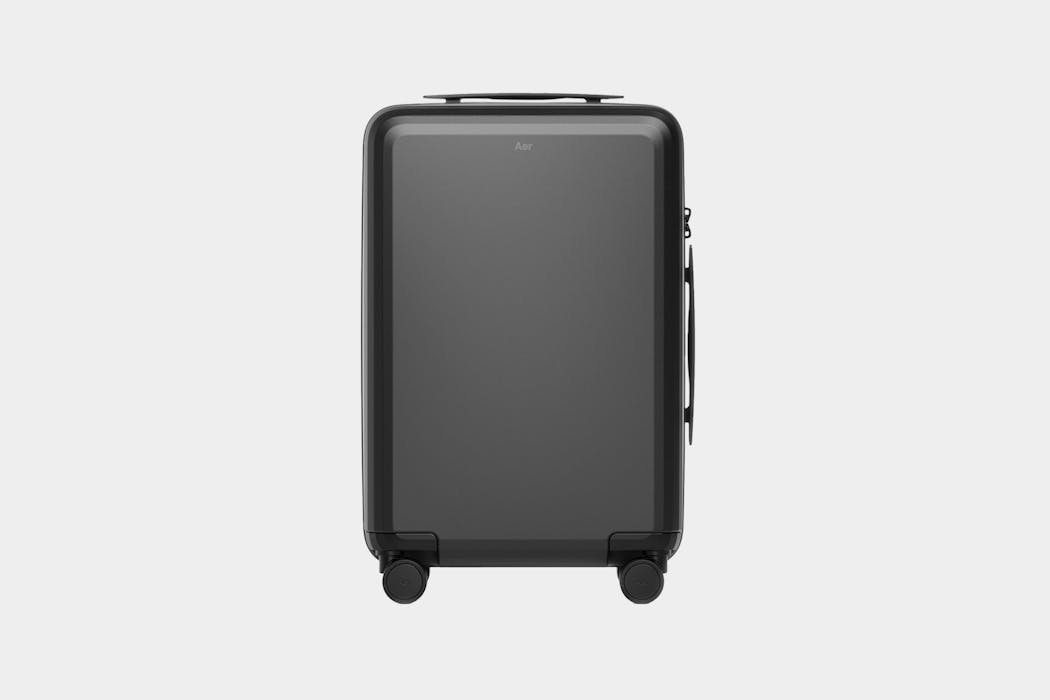
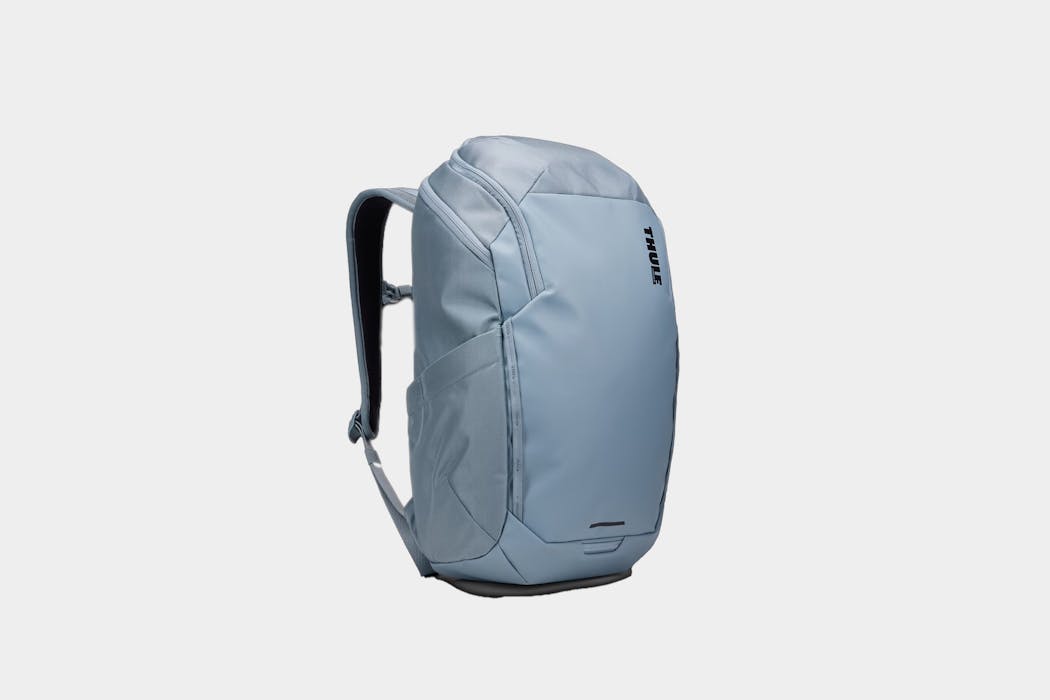
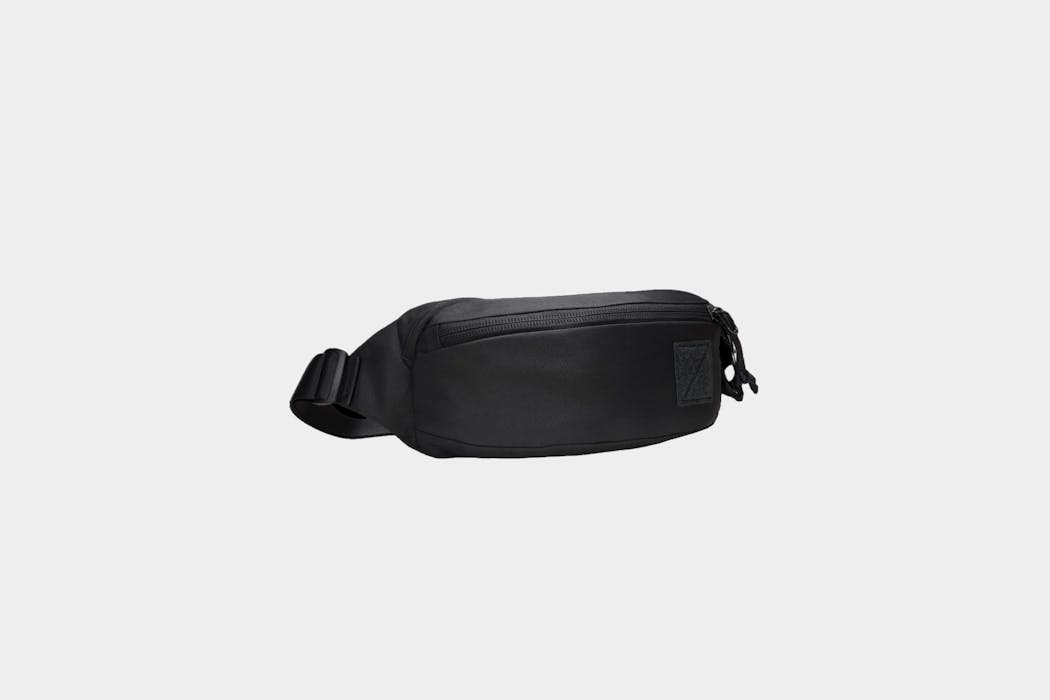

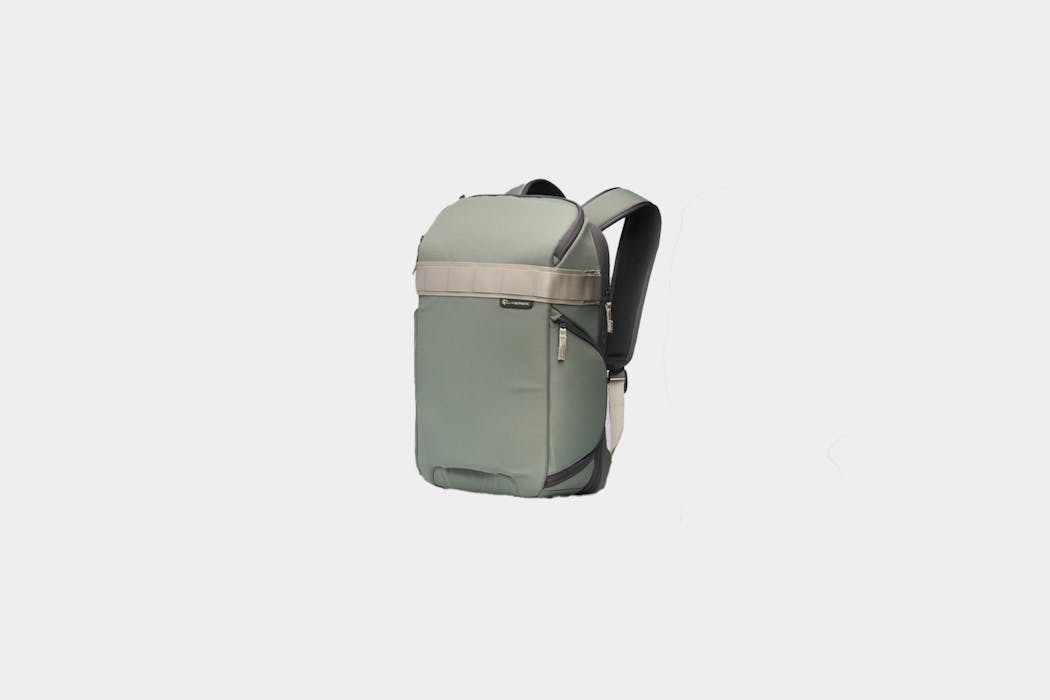
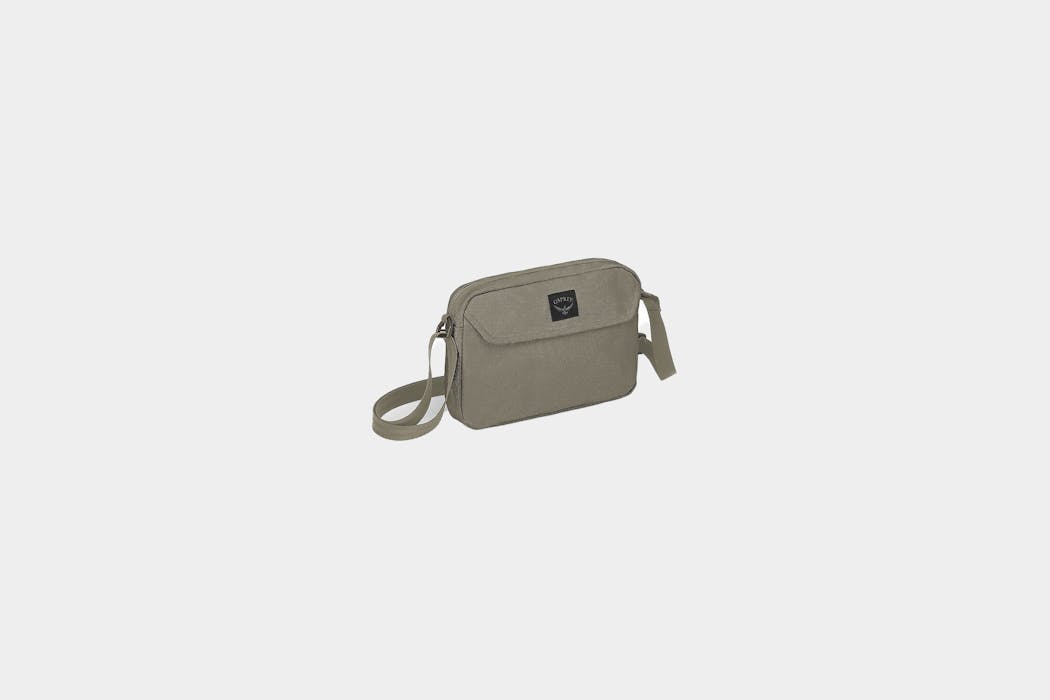
Get your questions about the Aer Flight Pack 3 answered from our team and the Pro Community right here on the page. Plus, join discussions with other members about gear, guides, and more.
Join Pack Hacker Pro or, Sign In